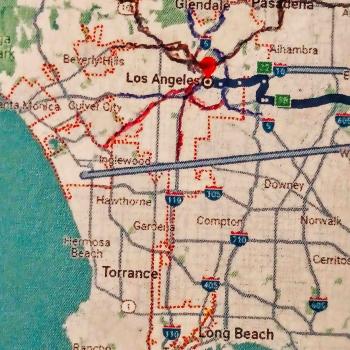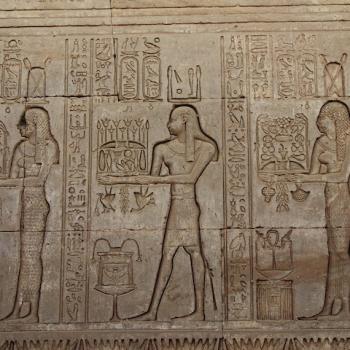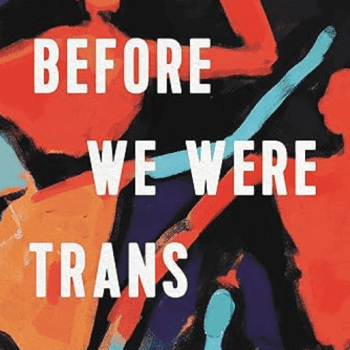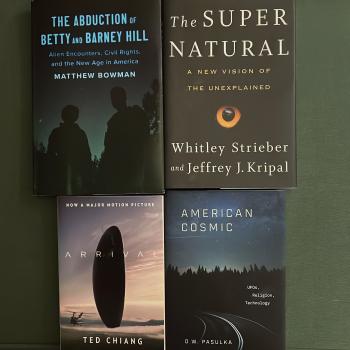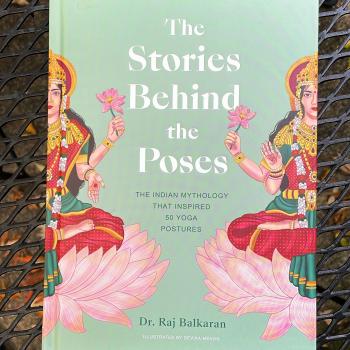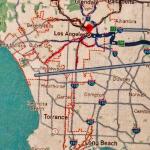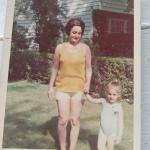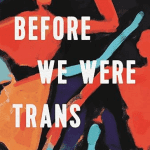This post is a continuation of yesterday’s theme of “American Muslims.”
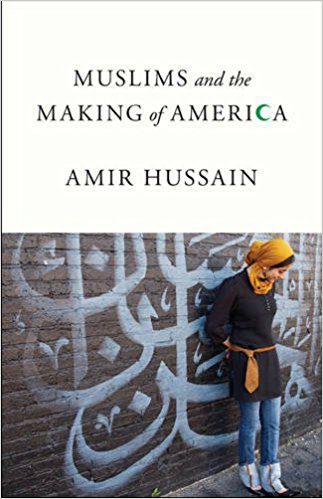 Regarding the first line of President Obama’s speech in Cairo that I ended with yesterday (“Islam has always been a part of America’s story”), here’s one example. We have a biography from 1734 about Job ben Soloman, an enslaved African Muslim who in 1730 was sold in Annapolis, Maryland. Part of why we know about him at all (including that he was a Muslim) is that his owner found it remarkable that Job could speak and write Arabic (8). Similarly, some of you may recall from Alex Haley’s 1977 television miniseries Roots (about tracing his ancestry) that there is a scene in which Kunta Kinte (played by LeVar Burton) shares with his mentor (played by Louis Gosset, Jr.) about being a Muslim. I should perhaps also note that Kunta Kinte was also sold in Annapolis (8-9).
Regarding the first line of President Obama’s speech in Cairo that I ended with yesterday (“Islam has always been a part of America’s story”), here’s one example. We have a biography from 1734 about Job ben Soloman, an enslaved African Muslim who in 1730 was sold in Annapolis, Maryland. Part of why we know about him at all (including that he was a Muslim) is that his owner found it remarkable that Job could speak and write Arabic (8). Similarly, some of you may recall from Alex Haley’s 1977 television miniseries Roots (about tracing his ancestry) that there is a scene in which Kunta Kinte (played by LeVar Burton) shares with his mentor (played by Louis Gosset, Jr.) about being a Muslim. I should perhaps also note that Kunta Kinte was also sold in Annapolis (8-9).
To widen our lens beyond these two specific examples, “Historians estimate that between 10 and 20 percent of the enslaved people who were kidnapped and brought here from West Africa were Muslim…. The first Muslim immigrants to North America other than slaves were from the Ottoman Empire in the late nineteenth century” (9). Enslaved Muslims helped enrich and build this country from before its official beginning. Indeed, George Washington, the first president of the United States, owned two enslaved Muslims named Fatima and Little Fatima, both named after the youngest daughter of the Prophet Muhammad and his first wife (and first follower) Khadījah. So—enslaved Muslims also helped build Mount Vernon (21).
Turning the clock back further, we also have records about Estevancio the Moor, an enslaved Muslim owned by a Spanish conquistador who landed in Florida in 1528. Estevancio was part of a group that explored Florida and Arizona before a member of the Zuni tribe killed him in 1539, in what is now New Mexico. “Almost eighty years before the Pilgrims landed in America,” a Muslim had already explored uncharted territory and died here” (16).
Turning the clock back one more time, it is important to remember that in the same year—1492—that “Columbus sailed the ocean blue,” Spain was also expelling all the Jews and Muslims who refused to convert to Christianity. Relatedly, there is a fascinating part of the 1994 book Shards of Love by the late María Rosa Menocal (1953-2012), the Sterling Professor of Humanities at Yale University, about Luis de Torres, a converso (a Jewish person forced to convert to Christianity) who was part of Columbus’s expedition as a translator. De Torres could speak Arabic and Hebrew in addition to Portuguese. Now this is where the historical records get fuzzy, but it seems that when Columbus landed in Cuba, de Torres was able to speak in Arabic with some of the Taíno chiefs in Cuba. This lends some potential credence to legends from the tenth and twelfth centuries about Arabic sailors crossing the Atlantic—perhaps pre-Columbus contacts (14-15). Menocal writes provocatively about “the speaking of Arabic in the New World when in the Old it is being outlawed” (15).
I don’t, however, want us to get distracted on this speculative point. Regardless, we know much more definitively that 10,000 years before Columbus’s voyage, in approximately 8,500 B.C.E., semi-nomadic groups of hunter-gatherers began to practice agriculture in seven different places on this continent, becoming the indigenous residents of this land (Dunbar-Ortiz 15). And as Columbus Day approaches next month, it is important to remind ourselves periodically that many history books fail to emphasize that even though our nation’s capital (the District of Columbia) is named after him, Columbus didn’t “discover America.” He never set foot in North America, much less on the land known today as The United States. Columbus’s first voyage landed in what is now the Dominican Republic and Haiti. When he returned on his second voyage, what he “discovered” was that the colony of forty men he had left had all been killed by the Indigenous people. On his third trip, he landed in what is now Venezuela, and on his fourth and final trip he reached “the Caribbean coast of Central America” (43).
But now we are definitely as far back in history as we’ll be going in this post. So let me give you one more historical example of Muslims in America, before moving into much more contemporary times. Given all the violence that has erupted about images of the prophet Mohammad, most commentators fail to note that there is an image of the Prophet Muhammad holding a sword and a Qur’an on the frieze on the walls of the United States Supreme Court. The intention of this art—which depicts many other figures—is to honor “the great lawgivers of history.” But given all the controversy about contested plaques and memorials, maybe it’s best to say, “Shhh! Don’t tell anybody” (Hussain 28-29).
In contrast, perhaps ones of the places Muslims have been most visible in American public life is in the sports arena. Cassius Clay, one of the most famous athletes of all time, changed his name to the very Islamic “Muhammad Ali.” There’s a lot of be said about his story, including being arrested, having his boxing title stripped, and being unable to box for three prime fighting years for being a conscientious objector to the Vietnam War, an objection based on the teachings of Islam about unjust wars. He famously said, “I ain’t got no quarrel with them Viet Cong—no Viet Cong ever called me [N-word].” In 1971, the U.S. Supreme Court unanimously overturned his conviction (73-75).
In addition to Muhammad Ali, there are so many examples of prominent American Muslim professional athletes. To name only a few of the most famous, starting with basketball:
- Ferdinand Lewis Alcindor, Jr. became Kareem Abdul-Jabbar in 1971 (61-68),
- Hakeem Olajuwon (71)
Moving on to football:
- Ahmad Rashad, wide receiver for the Vikings (78)
- Muhammad Wilkerson, a defensive end for the New York Jets
- Abdullah brothers, Husain and Hamza, safeties in the NFL
- Aqib Talib, a cornerback for the Denver Broncos,
- Shahid Khan, owner of the Jacksonville Jaguars.
- Ibtihaj Muhammad, a member of the U.S. Fencing Team, who at the 2016 Olympics became the first American woman to compete in hijab.
Some interesting dynamics have arisen as these popular athletes have periodically acted in public not only as celebrities, but also as Muslims.
There is so much more to say about Islam in America, but my hope is that at least in some small part, this post can help give lie to the perception that Islam is “new to America, foreign to America, or composed of adherents who are violent, ‘un-American,’ or a threat to our nation” (4). Instead, the reality has always been that most Muslims in America are our neighbors, friends, and fellow citizens. The debates about “Islam vs. the West” or “Muslims vs. America” have far too frequently been exaggerated and exploited for political gain. May we be part of learning to tell a better, more historical, and more hopeful story about “American Muslims” and “Islam in America,” a story which has been part of America since before there was an America.
The Rev. Dr. Carl Gregg is a certified spiritual director, a D.Min. graduate of San Francisco Theological Seminary, and the minister of the Unitarian Universalist Congregation of Frederick, Maryland. Follow him on Facebook (facebook.com/carlgregg) and Twitter (@carlgregg).
Learn more about Unitarian Universalism: http://www.uua.org/beliefs/principles





